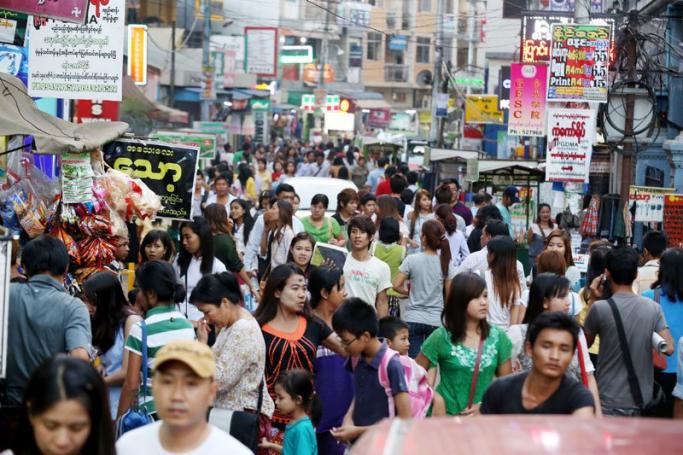The population of Myanmar totalled 51.5 million in the nationwide census conducted jointly by the Myanmar government and the United Nations last year, according to a Bangkok Post article quoting the Kyodo News Agency on 30 May.
The data was released at a ceremony held in the administrative capital Nay Pyi Taw,on 29 May, and shows that the population was slightly more than the 51.4 million in the preliminary results announced in August last year.
Of the total, 51.8 were female and 48.2% male, producing the sex ratio of 93 men per 100 women, which reflects a significantly lower male life expectancy and higher migration by men, the report said.
Myanmar people's life expectancy at birth stood at 66.8 years, one of the lowest in Southeast Asia, it said.
The population in Myanmar back in 1983, when it last conducted a nationwide census, was 35.3 million.
The final report revealed that the country's population is growing at an annual rate of 0.89%, less than half the rate in the 1970s when its first post-independence census was conducted.
Household amenity figures showed that only 32.4% of the 10.9 million households could use electricity as their main source of energy for lighting.
However, the population enjoys a healthy literary rate of almost 90, it said.
In terms of employment, 85% of adult males and 50% of females are in the workforce, with an unemployment rate of 4%.
The data includes details on such features as population size and growth, age and sex, marital status, migration, births and deaths, education, employment, disability, housing conditions and amenities in each state and region, district and township.
However, the report does not touch on sensitive categories including religion and ethnicity of the population groups, saying those would be made available only next year, apparently after the country's planned elections later this year.
When the census was conducted from 29 March to 10 April last year, it had omitted some population groups in the northern parts of Rakhine state as the communities there had rejected data collectors for not being allowed to identify themselves as "Rohingya," the Muslim population there facing persecution at home.
The Myanmar government refuses to regard the Rohingya population as part of the ethnic minority groups of Rakhine state, saying they are illegal immigrants from neighbouring Bangladesh, where the population density is nearly 16 times higher than in Myanmar.
You are viewing the old site.
Please update your bookmark to https://eng.mizzima.com.
Mizzima Weekly Magazine Issue...
14 December 2023
New UK Burma sanctions welcome...
13 December 2023
Spring Revolution Daily News f...
13 December 2023
Spring Revolution Daily News f...
12 December 2023
Spring Revolution Daily News f...
11 December 2023
Spring Revolution Daily News f...
08 December 2023
Spring Revolution Daily News f...
07 December 2023
Diaspora journalists increasin...
07 December 2023
EU official bemoans 'unpredictablity' of Chinese law on Beijing trip












